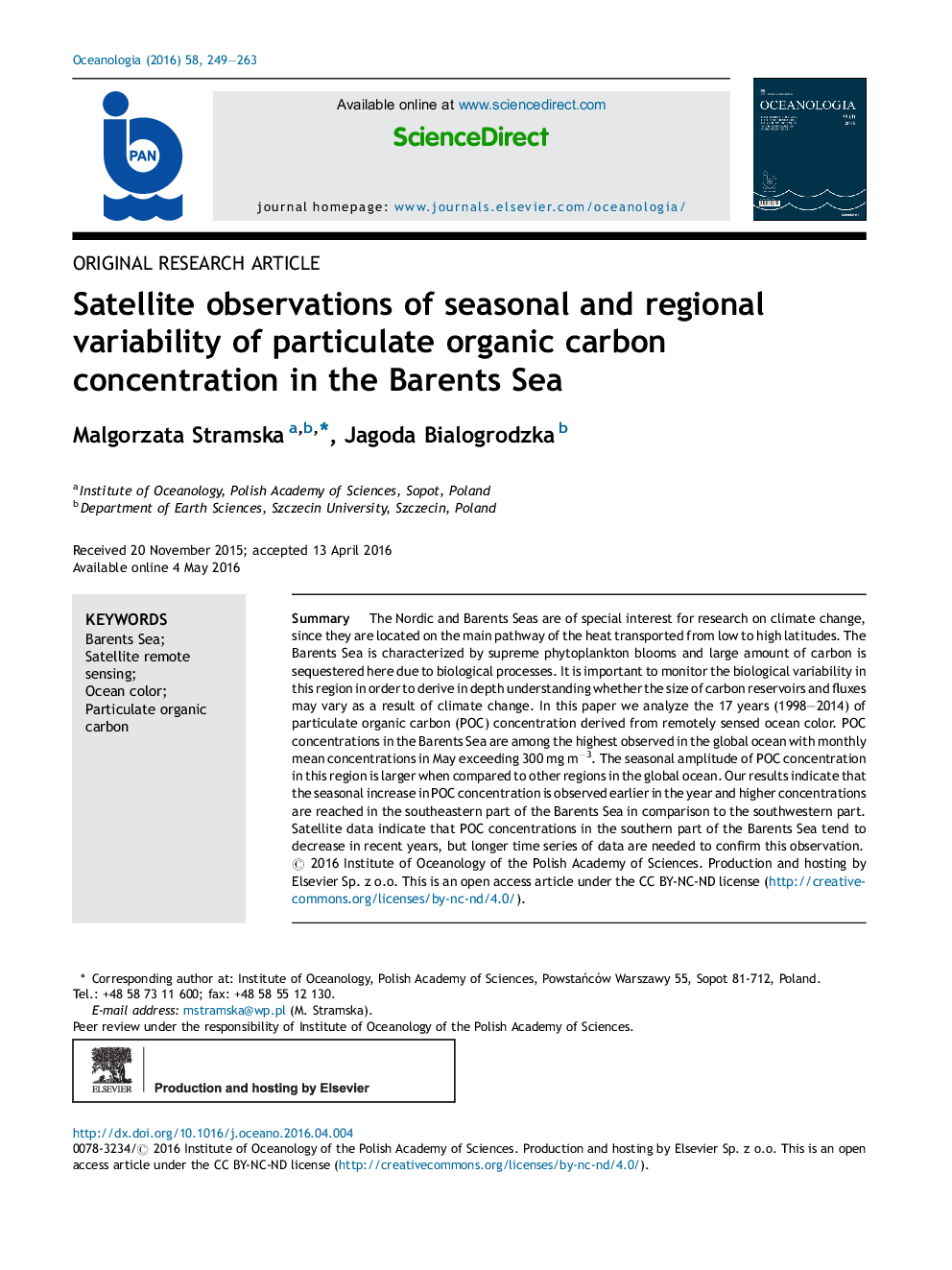| Article ID | Journal | Published Year | Pages | File Type |
|---|---|---|---|---|
| 5519736 | Oceanologia | 2016 | 15 Pages |
SummaryThe Nordic and Barents Seas are of special interest for research on climate change, since they are located on the main pathway of the heat transported from low to high latitudes. The Barents Sea is characterized by supreme phytoplankton blooms and large amount of carbon is sequestered here due to biological processes. It is important to monitor the biological variability in this region in order to derive in depth understanding whether the size of carbon reservoirs and fluxes may vary as a result of climate change. In this paper we analyze the 17 years (1998-2014) of particulate organic carbon (POC) concentration derived from remotely sensed ocean color. POC concentrations in the Barents Sea are among the highest observed in the global ocean with monthly mean concentrations in May exceeding 300 mg mâ3. The seasonal amplitude of POC concentration in this region is larger when compared to other regions in the global ocean. Our results indicate that the seasonal increase in POC concentration is observed earlier in the year and higher concentrations are reached in the southeastern part of the Barents Sea in comparison to the southwestern part. Satellite data indicate that POC concentrations in the southern part of the Barents Sea tend to decrease in recent years, but longer time series of data are needed to confirm this observation.
